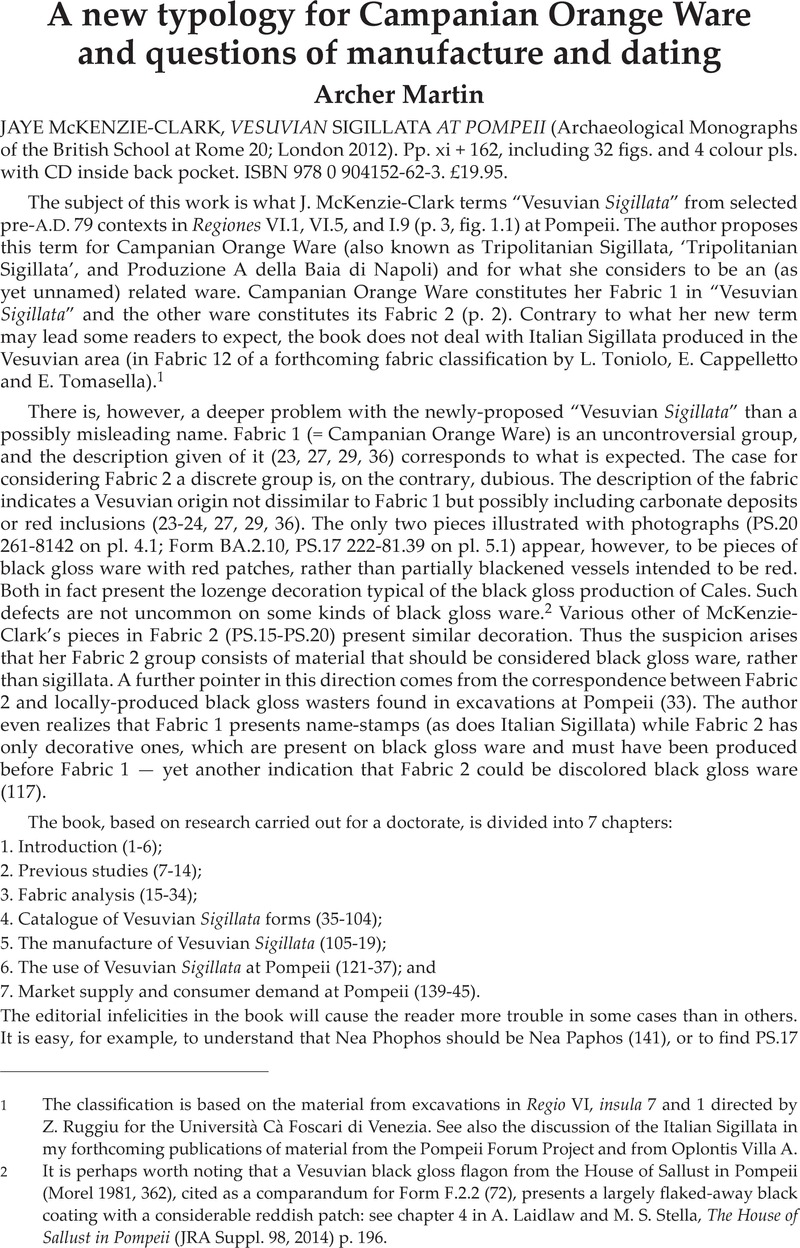No CrossRef data available.
Published online by Cambridge University Press: 27 November 2014

1 The classification is based on the material from excavations in Regio VI, insula 7 and 1 directed by Z. Ruggiu for the Università Cà Foscari di Venezia. See also the discussion of the Italian Sigillata in my forthcoming publications of material from the Pompeii Forum Project and from Oplontis Villa A.
2 It is perhaps worth noting that a Vesuvian black gloss flagon from the House of Sallust in Pompeii (Morel 1981, 362), cited as a comparandum for Form F.2.2 (72), presents a largely flaked-away black coating with a considerable reddish patch: see chapter 4 in A. Laidlaw and Stella, M. S., The House of Sallust in Pompeii (JRA Suppl. 98, 2014) p. 196 Google Scholar.
3 Kenrick, P. M., “‘Tripolitanian’ Sigillata,” in Excavations at Sidi Khrebish Benghazi (Berenice) vol. III.1: The fine pottery (Suppl. to Libya Antiqua V, 1985) 283–302 Google Scholar.
4 See Giuseppe, H. Di, Black-gloss ware in Italy. Production management and local histories (BAR S2335, Oxford 2012) 4 CrossRefGoogle Scholar, for an overview of the recent developments that have led first to a distinction between Campana B of Etruria and B-oid produced elsewhere and then to the concept of the Campana B Group.
5 See fig. 4.22-23 for illustrations of the diagnostic sherds, all attributed to VS 1 or Campanian Orange Ware.
6 Pucci, G., “Le terre sigillate italiche, galliche e orientali,” in L'instrumentum domesticum di Ercolano e Pompei nella prima età imperiale (Quaderni di cultura materiale 1; Rome 1977) 9–21 Google Scholar.
7 Atkinson, D., “A hoard of Samian Ware from Pompeii,” JRS 4 (1914) 27–64 Google Scholar.
8 It would have been worth giving more details, even if this ware is not the author’s particular focus.